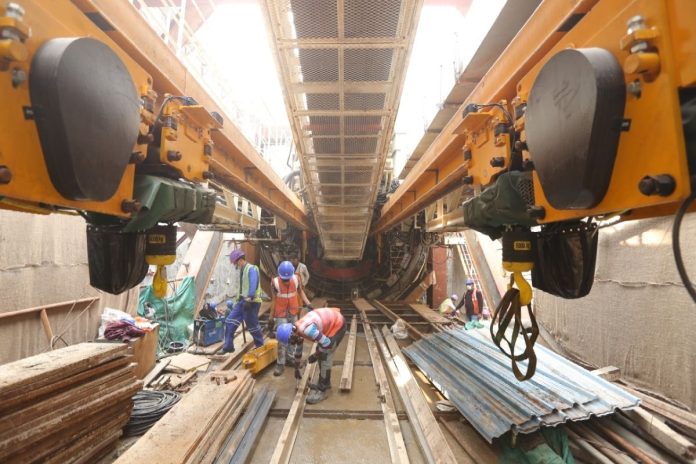Snapshot
The length of the tunnel will be around 3 km between Anand Vihar and New Ashok Nagar.
Commencing the tunnelling work for the construction of India’s first Regional Rapid Transit System (RRTS) corridor between Delhi and Meerut about 90-metre long tunnel boring machine (TBM) has started building a tunnel from Anand Vihar towards New Ashok Nagar in Delhi.
With a 6.6-metre diameter, the RRTS tunnels are bigger as compared to that of the other metro systems in the country due to larger rolling stock with a higher design speed of 180 kmph RRTS trains. It will help in reducing the air pressure and discomfort to passengers due to the higher speed of the trains, according to the National Capital Region Transport Corporation (NCRTC).
The length of the tunnel will be around 3 km between Anand Vihar and New Ashok Nagar.
Four TBMs are to be launched from Anand Vihar station — two for a drive from Anand Vihar towards New Ashok Nagar side and two for a drive from Anand Vihar towards Sahibabad side while the TBMs from Anand Vihar to Sahibabad will construct around 2 km of tunnels each.
The underground stretches of RRTS will have twin separate tunnels for the to and fro movement of the trains. There are provisions of emergency escapes for commuters’ safety in case of any emergency. It will also have a cross-passage at around every 250 metre.
The design lives of the tunnels are planned and expected to be 100 years. RRTS corridor is being built to reduce vehicular traffic and air pollution and also to ensure balanced development in the region.
Construction work on the entire 82 km long Delhi-Ghaziabad-Meerut RRTS corridor is in full swing. The corridor will have 25 stations, including two depots and one stabling yard.
The priority section between Sahibabad to Duhai is scheduled to be operational by March 2023 and trial runs on the corridor are expected to begin this year. The complete corridor will be opened to the public by 2025.
More than 14,000 workers and 1,100 engineers are working on the project. So far, an 18 km viaduct of priority section with around 1,400 piers has been constructed. Foundation work has been completed for 80 per cent of the corridor.
There will be provision for ventilation shafts for infusing air into the tunnel and will also have a side walkway of width 60 cm-90 cm to support maintenance activities and will function as an added emergency escape.
The 17 km priority section between Sahibabad to Duhai is scheduled to be operational by March 2023 and trial runs are expected to begin this year. The complete corridor will be opened to the public by 2025.
Decongestion of the national capital, reducing vehicular traffic and air pollution, and balanced regional development are some of the reasons behind project implementation.
NCRTC is adopting cutting-edge technology to ensure safe and timely completion of the works while minimising inconvenience to the road users, local passer-by, business owners, and residents along the entire stretch. One of the techniques being used extensively for the project is pre-casting of various civil structures and reducing on-site construction.


